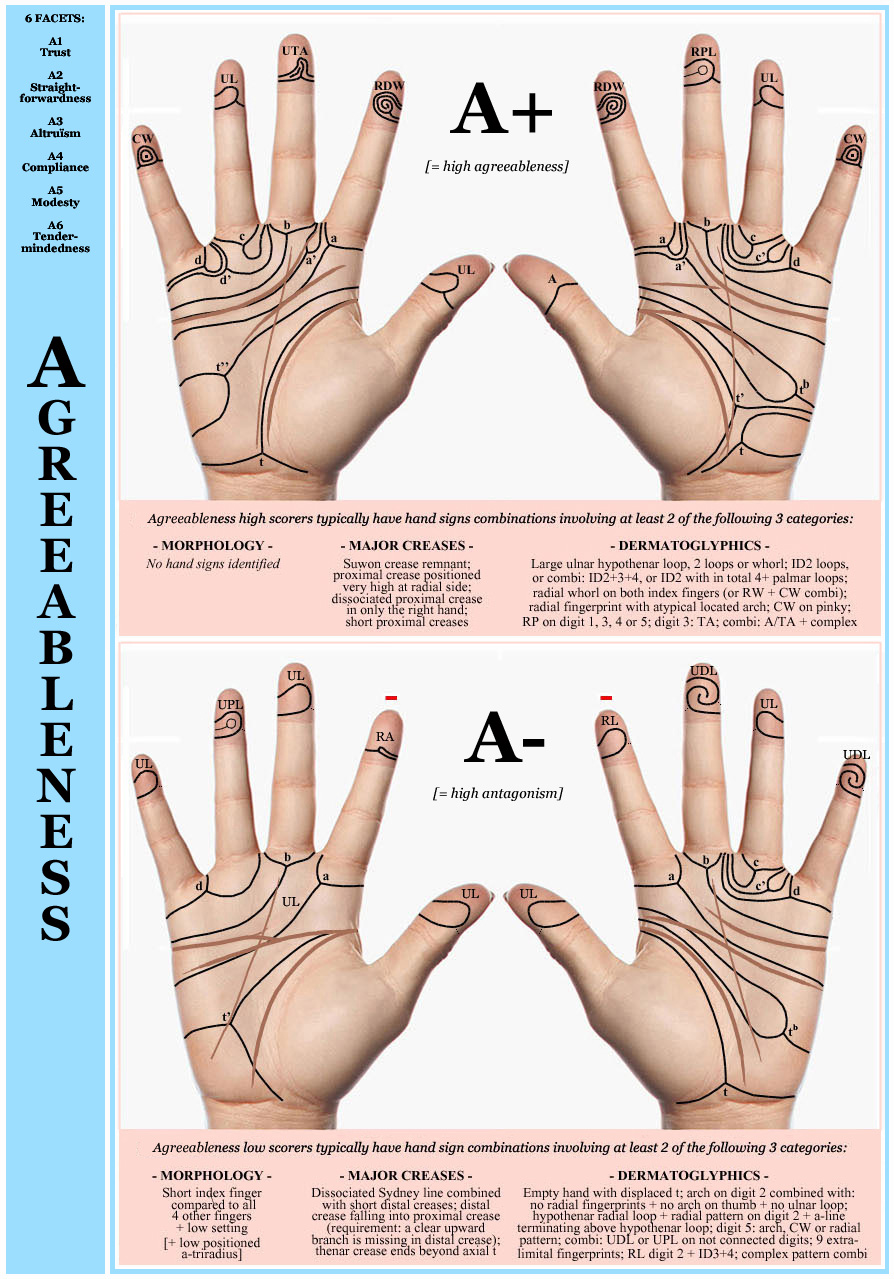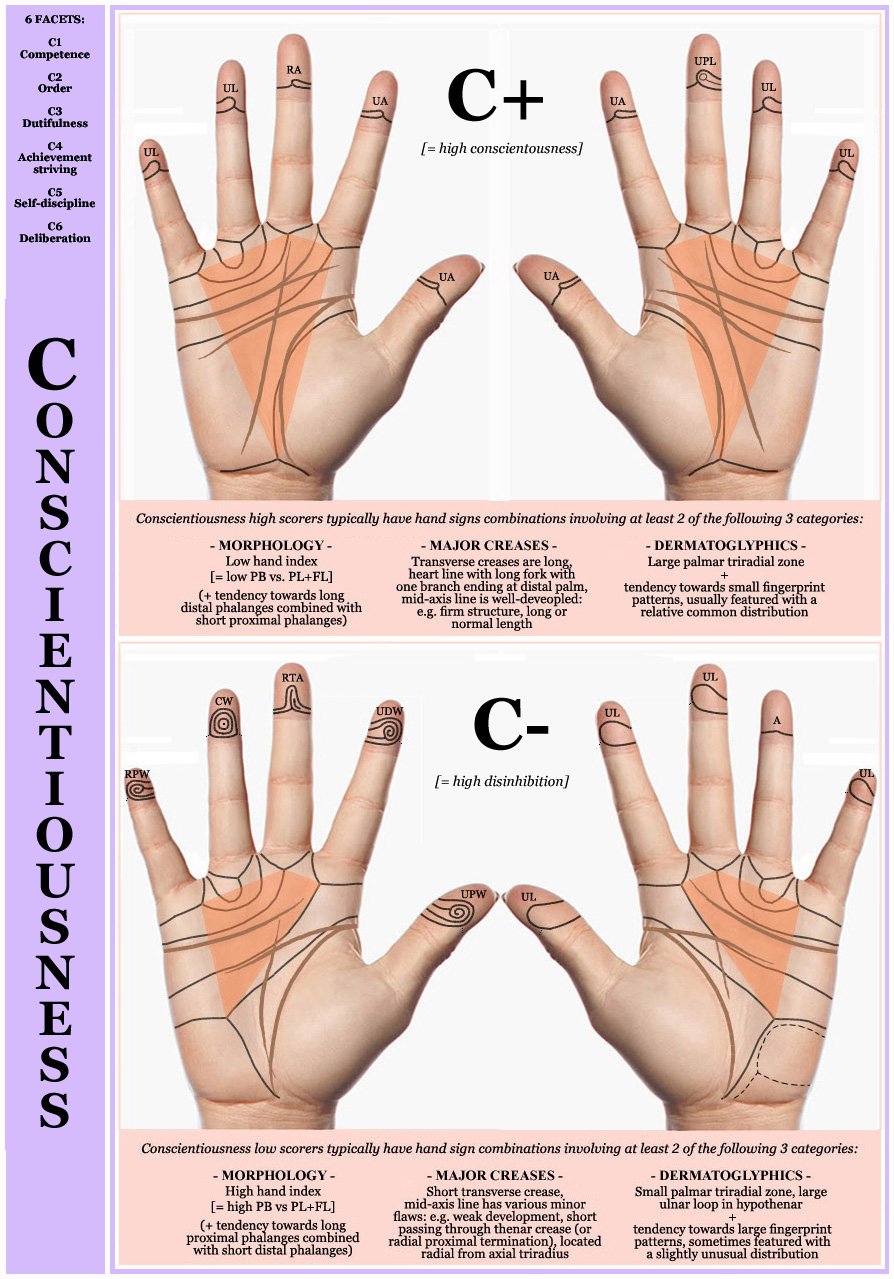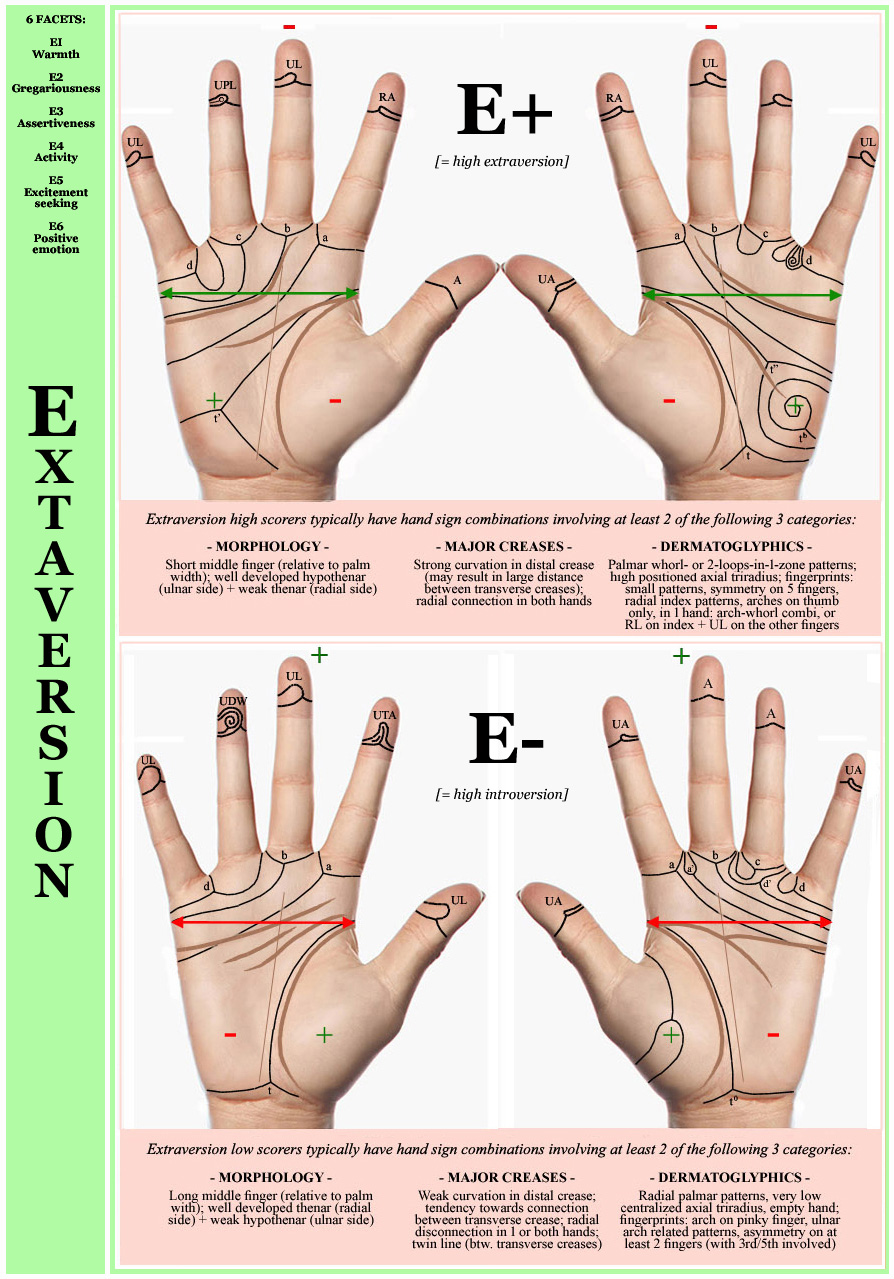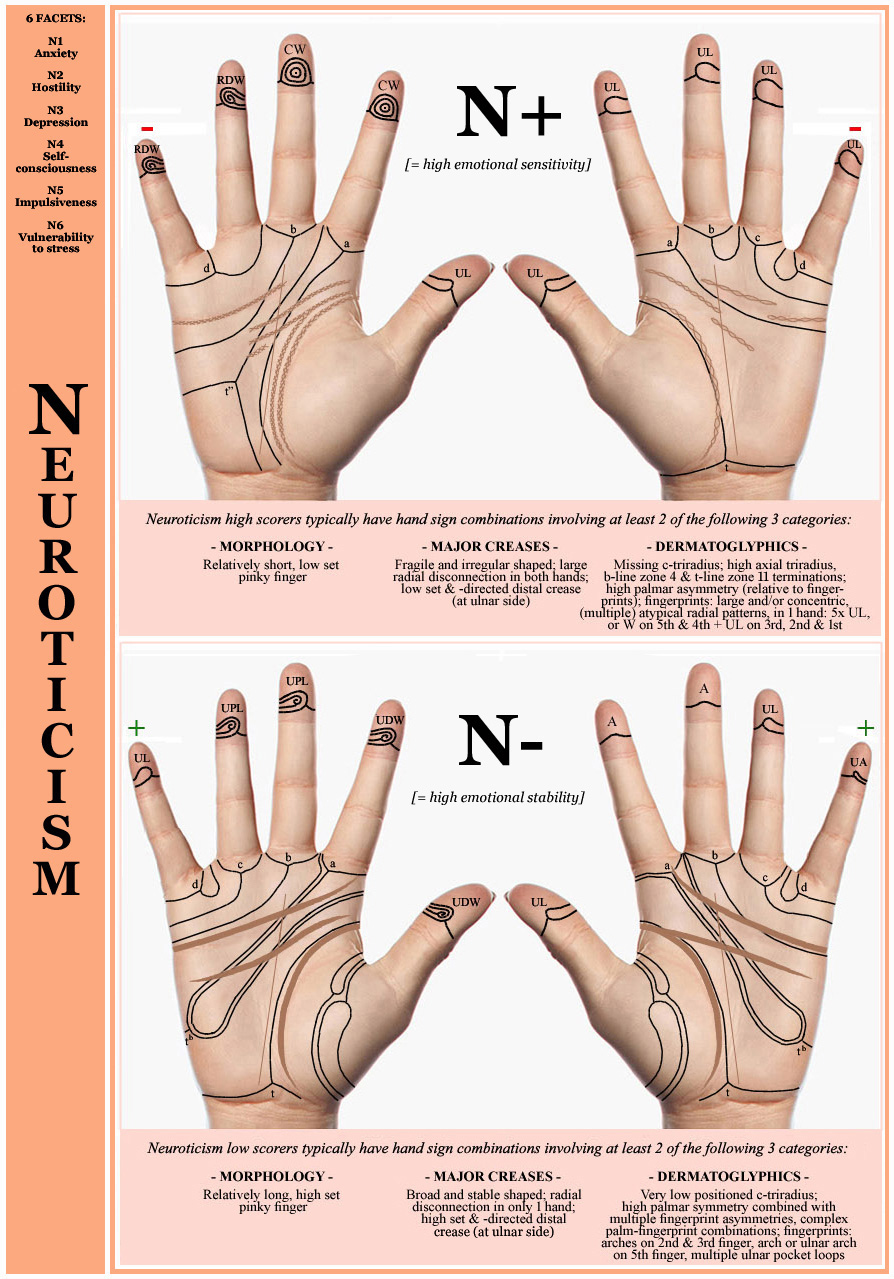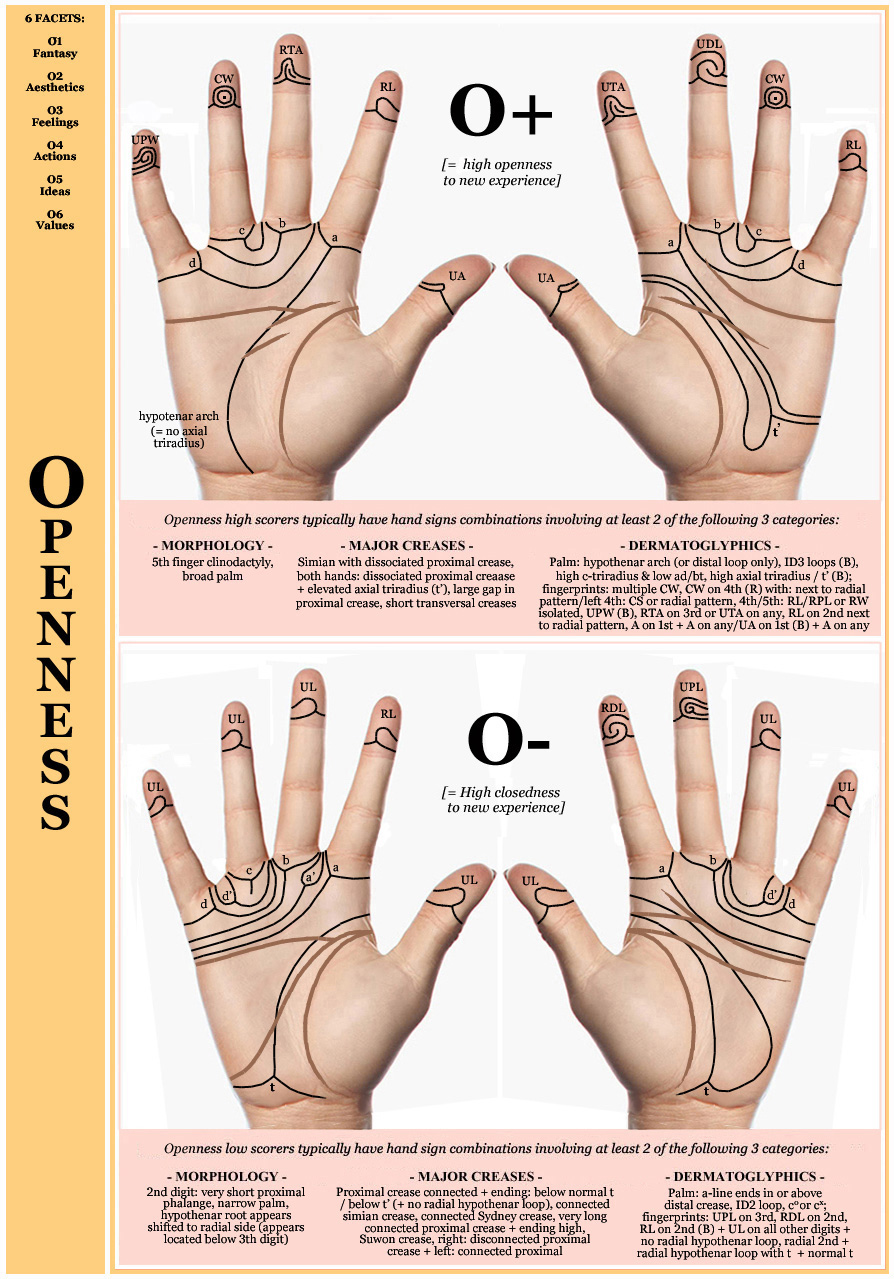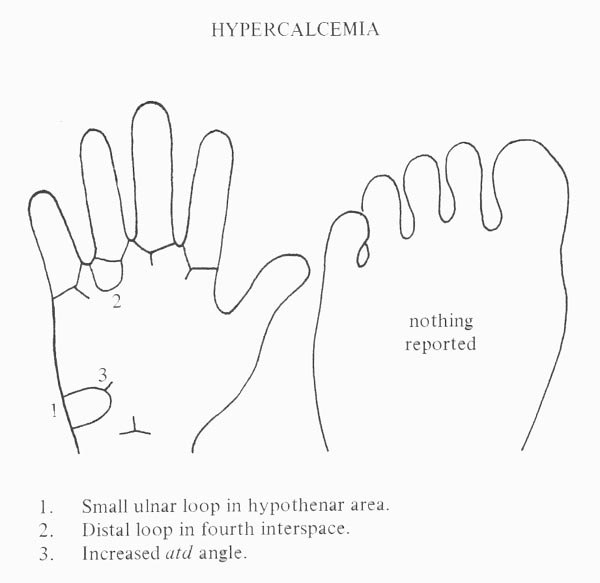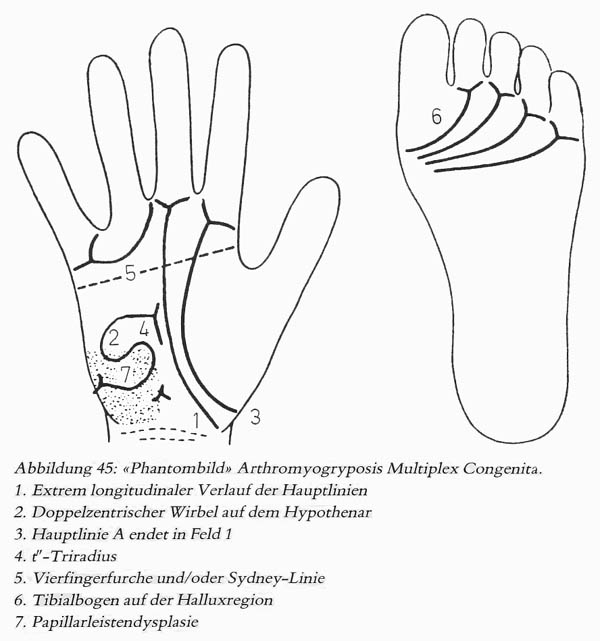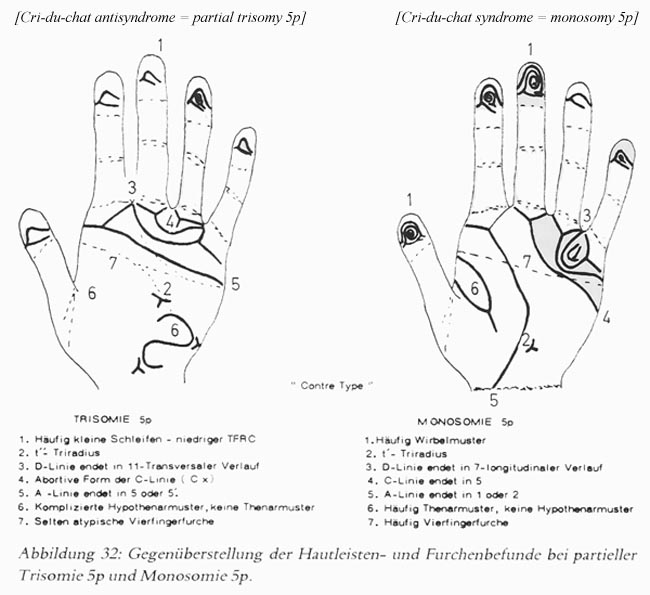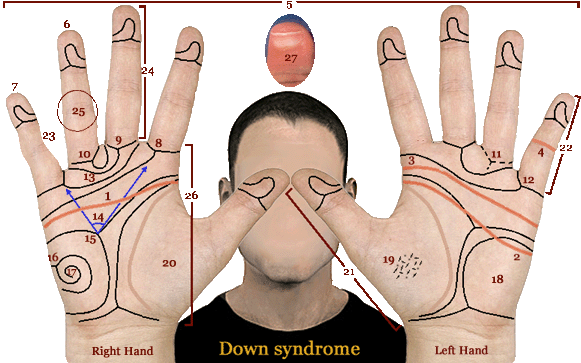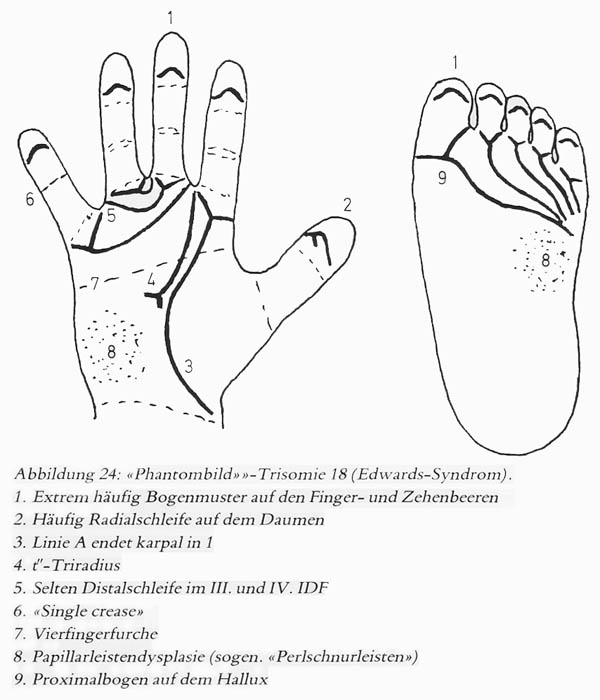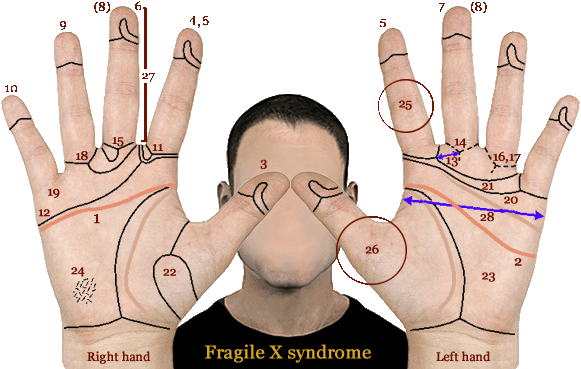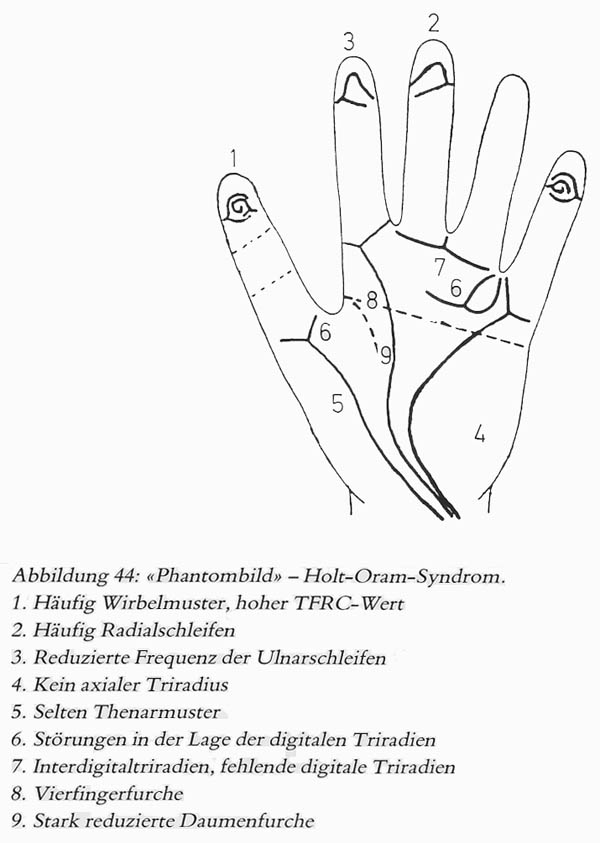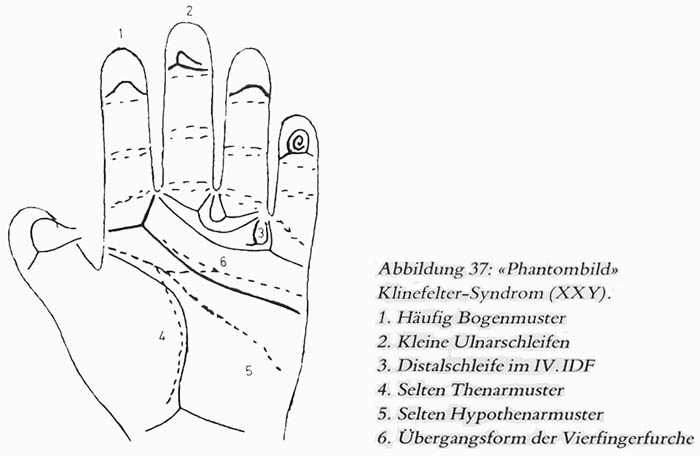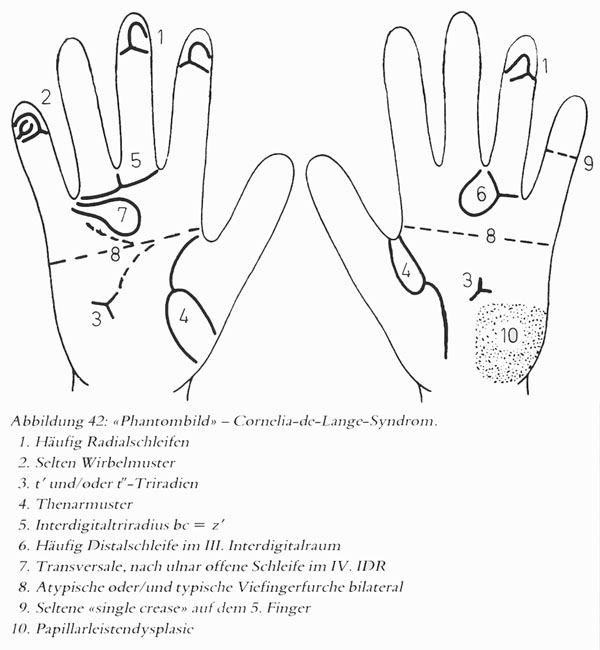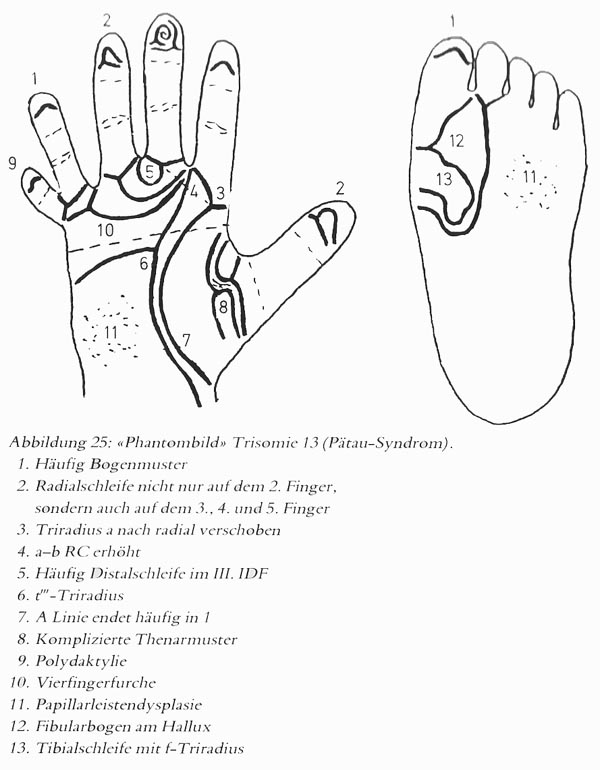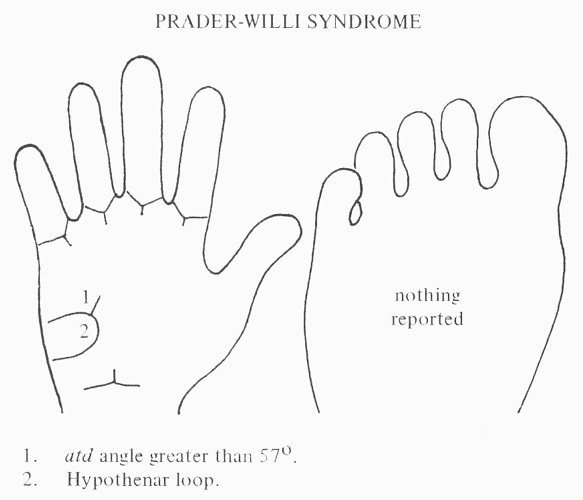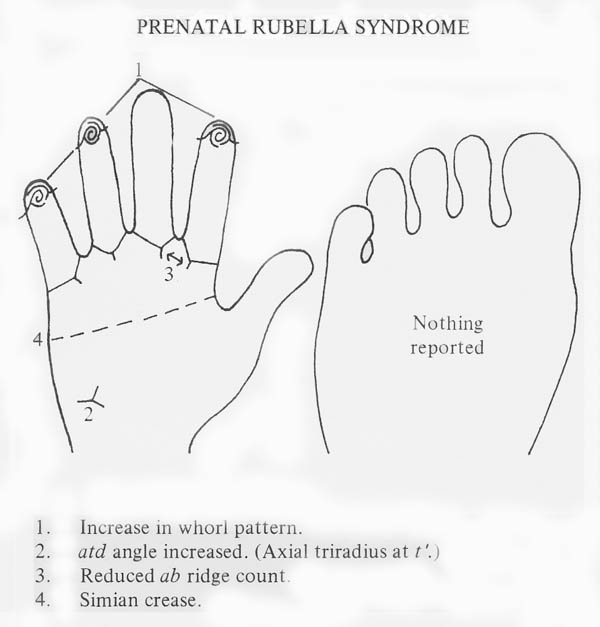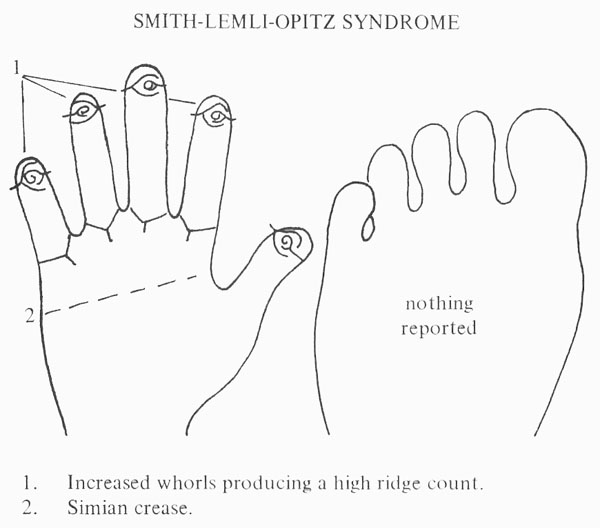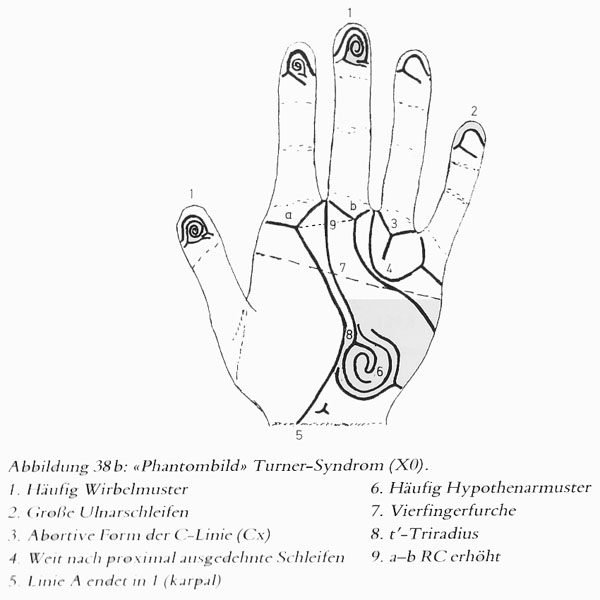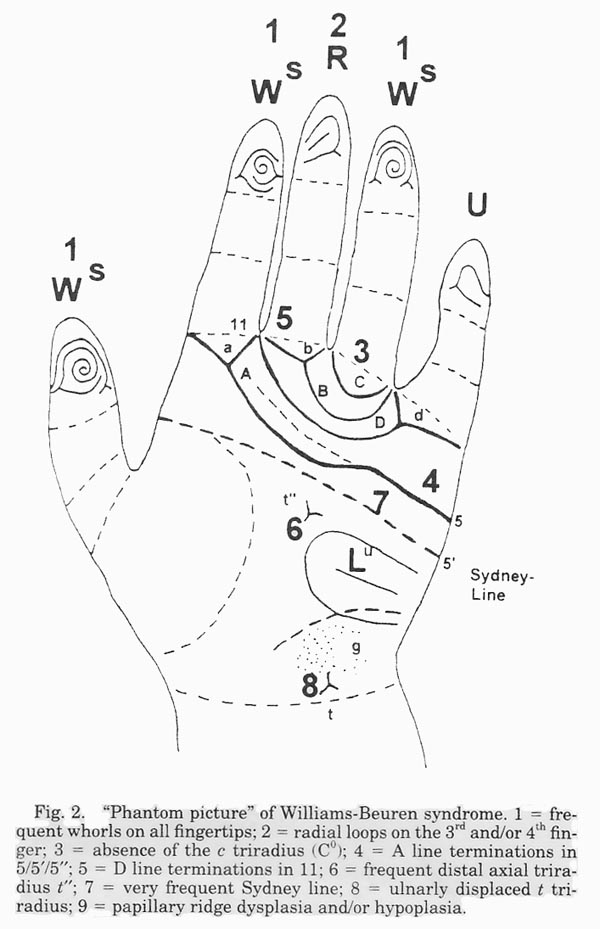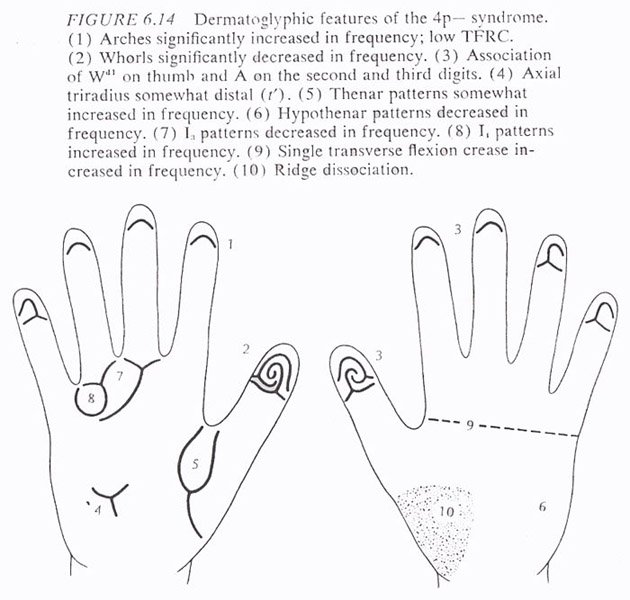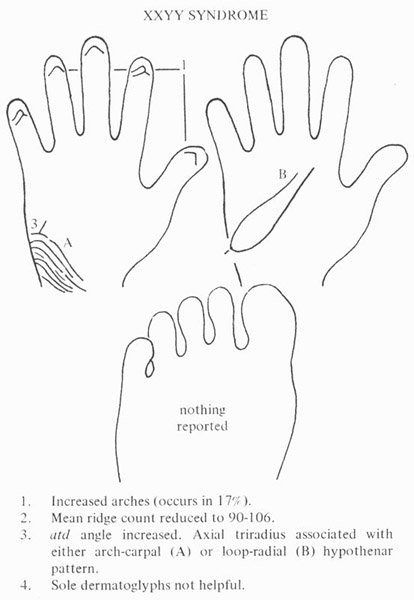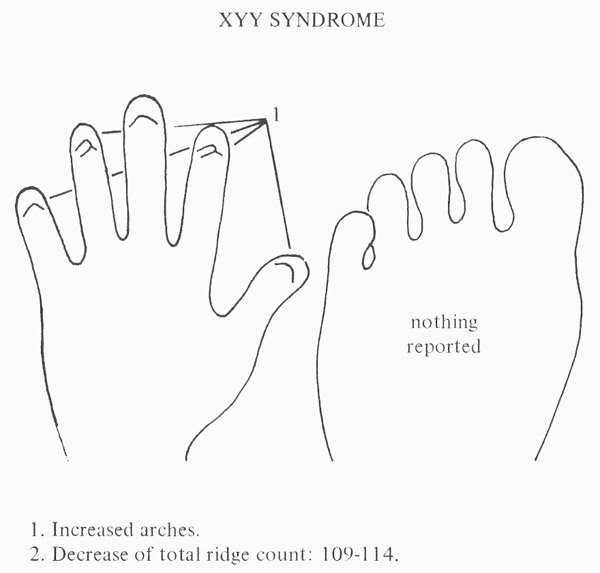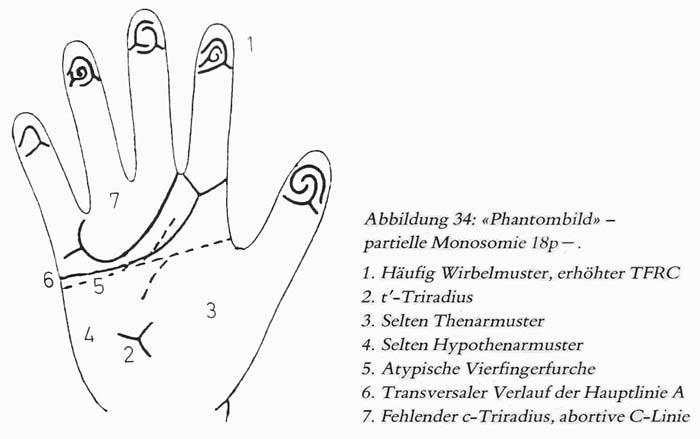
Scientific Hand Charts Collection:
Kabuki syndrome!
2 Hand Charts for Kabuki syndrome!
Kabuki makeup syndrome (KMS) is a pediatric congenital disorder featured with multiple congenital anomalies and intellectual disabilities.
Prevalence: quite rare, affecting roughly one in 32,000 births.
Two hand charts are available for Kabuki syndrome describing the significance of fingertip pads (persisting volar pads) often combined with various typical dermatoglyphic features plus a single interphalangeal crease- and/or short pinky fingers - see pictures below.
NOTICE: Individual hand features described below should not get associated in isolation with any theme; only combinations involving multiple hand levels have potential for diagnostic purposes.
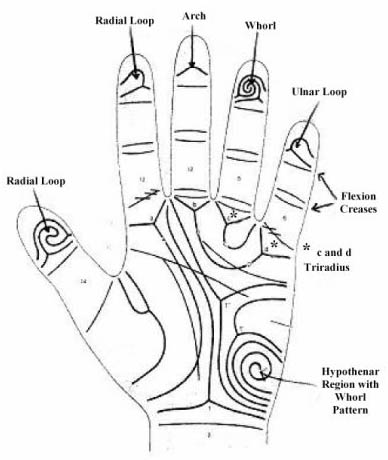 QUOTE: "This illustration shows the various landmarks related to dermatoglyphics and some common patterns or formations. In Kabuki syndrome, there are at least five commonly seen changes: (1) increase in ulnar loops (2) absense of the c-triradius or d-triradius - region highlighted with asterix (3) increase in hypothenar patterns (4) single flexion crease in 5th digit (5) prominent fingerpads (not shown)."
QUOTE: "This illustration shows the various landmarks related to dermatoglyphics and some common patterns or formations. In Kabuki syndrome, there are at least five commonly seen changes: (1) increase in ulnar loops (2) absense of the c-triradius or d-triradius - region highlighted with asterix (3) increase in hypothenar patterns (4) single flexion crease in 5th digit (5) prominent fingerpads (not shown)."
Dermatoglyphics and Kabuki syndrome (Albert, 1999)
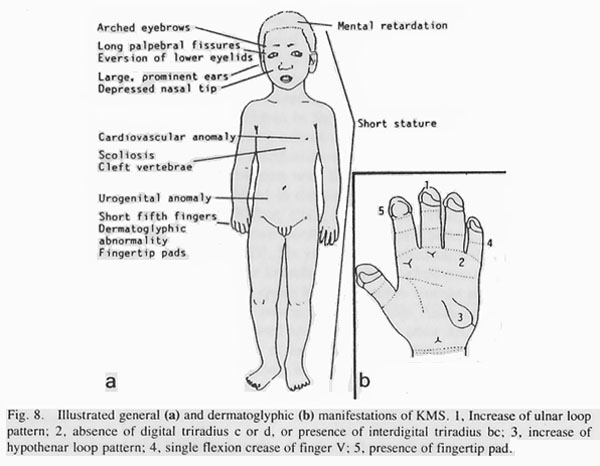
Kabuki make-up (Niikawa-Kuroki) syndrome: a study of 62 patients (1988);
Am J Med Genet, 1988 Nov; 31(3) p.565-89; authors: N. Niikawa, et al.

Other significant hand signs (not reported inside the hand chart):
The palmar dermatoglyphics are very often (8 out of 12 individuals) featured with a radial loop on the hypothenar, and in about half of these cases (4 out of 12 individuals) this radial loop is formed throug the path of the a-line (source: N. Niikawa et all, 1982).
Kabuki syndrome is often featured with the missing of distal interphalangeal creases [DIP/IPD] of the 4th digit (50%) or 3rd digit (10%) - see e.g. the 4th digit in the 2nd hand chart displayed above; this feature is also often featured with limitation of movement (source info + picture below: C. Michot et al., 2013).
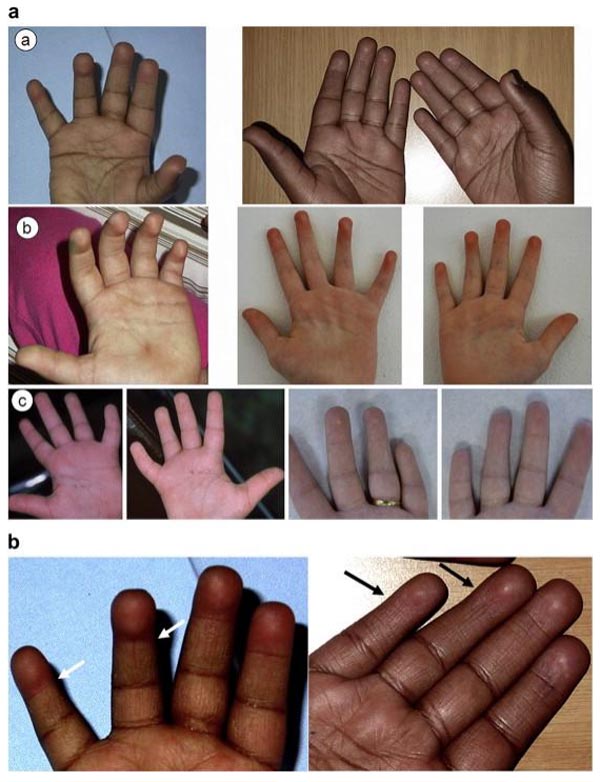
Also, Kabuki syndrome is often (67%) featured with curved fifth fingers [clinodactyly] (source: Genetics Home Reference), short fifth fingers [brachydactyly], and/or abnormal short middle phalange in the fifth finger [brachymesophalangy] (source: L. Armstrong et al, 2005). Ulnar deviation of fingers is sometimes also present.

(source: Dermatology Online Journal).
All significant hand signs listed above for Kabuki syndrome together cover five out of the nine perspectives of the hand as defined according Multi-Perspective Hand Reading (including hand level 2, 5, 6, 8 & 9).
A summary of the most significant hand sign combinations in Kabuki make-up syndrome is described here:
Decoding the language of the hand:
hand sign combinations in Kabuki syndrome!
Hand charts are available for many other diagnostic issues;
start browsing HERE
![]() SCIENTIFIC HAND CHARTS: Introduction
SCIENTIFIC HAND CHARTS: Introduction
Hand charts for Big Five personality dimensions:
• Hand chart(s) for Agreeableness (2x: 1 in 4 people)
• Hand chart(s) for Conscientiousness (2x: 1 in 4 people)
• Hand chart(s) for Extraversion (2x: 1 in 4 people)
• Hand chart(s) Neuroticism (2x: 1 in 4 people)
• Hand chart(s) Openness (2x: 1 in 4 people)
Hand charts for diseases:
• Hand charts for hypercalcemia (1 in 4,000 people)
Hand charts for syndromes:
• Hand charts for arthrogryposis (1 in 10,000 people)
• Hand charts for cri-du-chat syndrome (1 in 30,000 people)
• Hand charts for Down syndrome (1 in 700 live births)
• Hand charts for Edwards syndrome (1 in 6,000 live births)
• Hand charts for fetal alcolhol syndrome (1 in 500 people)
• Hand charts for fragile-X syndrome (1 in 5,000 people)
• Hand charts for Holt-Oram syndrome (1 in 100,000 live b.)
• Hand charts for Kabuki syndrome (1 in 32,000 people)
• Hand charts for Klinefelter syndrome (1 in 1000 males)
• Hand charts for de Lange syndrome (1 in 15,000 live births)
• Hand charts for Marfan syndrome (1 in 5,000 people)
• Hand charts for Patau syndrome (1 in 15,000 live births)
• Hand charts for Prader-Willi syndrome (1 in 15,000 births)
• Hand charts for Rubella syndrome (1 in 100,000 people)
• Hand charts for Rubinstein syndrome (1 in 200,000 births)
• Hand charts for SLOS (1 in 40,000 births)
• Hand charts for Turner syndrome (1 in 2,000 female births)
• Hand charts for Warkany syndrome (1 in 200,000 births)
• Hand charts for Williams syndrome (1 in 14,000 births)
• Hand charts for Wolf-Hirschhorn syndrome (1 in 50,000 b.)
• Hand charts for XXYY syndrome (1 in 30,000 male births)
• Hand charts for XYY syndrome (1 in 1,000 male births)
• Hand charts for 18 deletion syndromes (2 in 40,000 live b.)
NOTICE: Reflexology hand charts are not included in this section because the scientific foundation of any of such charts is actually unknown; nevertheless, you can read more about the fundamentals of such charts HERE.
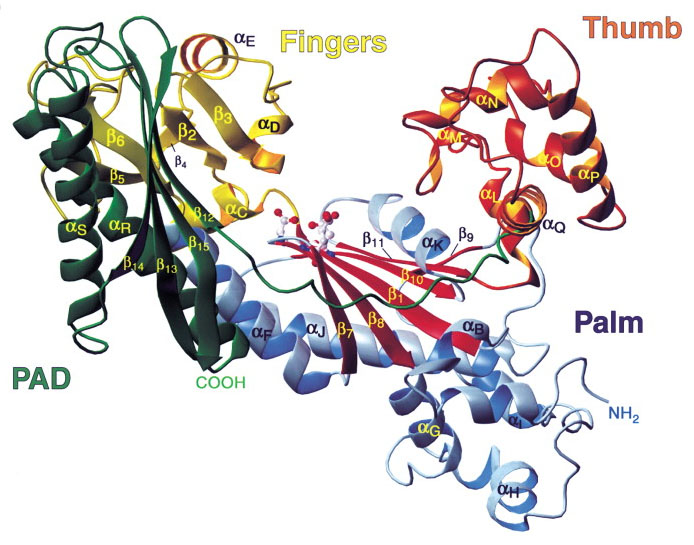
Other charts & maps:
• Fingerprints world map
• Hand reading experts world map
• Hand reflexology charts
